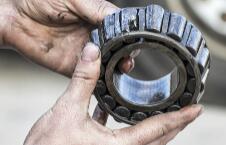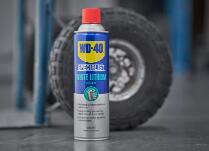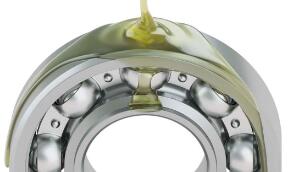The Best Practices for Oiling Ball Bearings
Learn how to oil ball bearings for optimal performance,
reduce wear and tear, and extend the life of your bearings with these best practice tips.
Oiling ball bearings is an important part of maintaining the integrity of your machinery,
and understanding the best practices for doing so is essential for ensuring the longevity and performance of your equipment.
The best practices for oiling ball bearings include using proper lubrication,
regularly checking for proper lubrication levels, monitoring the bearings for signs of wear,
and understanding the maintenance requirements for different types of bearings.
Know the importance of oiling and maintaining ball bearings including their benefits and the materials or tools needed to do the process.
Follow these detailed steps to do the proper oiling of your ball bearings.
The importance of oiling and maintaining ball bearings

Benefits of oiling ball bearings
Oiling ball bearings can provide several benefits, including:
1.Reducing friction: Oiling ball bearings help to reduce friction between the metal balls and the bearing race,
which can extend the life of the bearing and improve its performance.
2.Preventing rust: Oil can also help prevent rust and corrosion from forming on the metal surface of the bearings, which can lead to premature failure.
3.Increasing durability: Regular oiling can help to maintain the lubrication of the bearings,
preventing them from becoming dry and brittle over time, which can reduce their lifespan.
4.Improving performance: A well-oiled bearing can also improve the overall performance of a machine or device by reducing the amount of energy needed to operate it,
which can result in smoother operation and less wear and tear.
5.Quieter operation: Properly lubricated bearings can also run more quietly than dry bearings,
reducing noise and vibration in the machine or device.
Tools and materials required for oiling ball bearings
A. Ball bearings
Ball bearings are small, spherical metal balls that are used to reduce friction between two moving parts.
They are commonly used in machines and devices of all kinds, from bicycles and cars to industrial machinery and aerospace applications.
B. Oil
Several types of oil can be used for lubricating ball bearings, including mineral oil, synthetic oil, and specialty oils designed for specific applications.
The type of oil used will depend on factors such as the operating temperature, speed, load, and environment of the bearings.
C. Cleaning cloth
Before applying oil to ball bearings, it's important to clean them thoroughly to remove any dirt, debris, or old oil that may be present.
A clean, lint-free cloth can be used for this purpose.
It's important to use a cloth that won't leave any fibers or other particles behind that could interfere with the operation of the bearings.
Preparing for oiling

A. Remove the bearing from the machine
The process for removing ball bearings from a machine can vary depending on the specific machine and bearing type.
However, here are some general steps that may be followed:
1.Identify the bearings: Determine which bearings need to be removed and where they are located in the machine.
2.Prepare the workspace: Clear the workspace around the bearing, and gather any necessary tools, such as a bearing puller, pliers, or a socket wrench.
3.Remove any retaining components: Depending on the machine, there may be retaining components such as snap rings,
retaining rings, or locknuts that need to be removed before the bearing can be taken out.
4.Use a bearing puller: If the bearing is pressed into a housing or shaft, a bearing puller may be needed to remove it.
A bearing puller is a tool that can grip the bearing securely and apply force to pull it out.
5.Use pliers or a socket wrench: If the bearing is mounted on a shaft with a press fit,
pliers or a socket wrench may be used to carefully wiggle the bearing out.
B. Clean the bearing
Once the bearings have been removed, they should be thoroughly cleaned with a solvent or degreaser and a lint-free cloth.
Here's how to clean ball bearings using a solvent or degreaser and a lint-free cloth:
1.Remove the bearings from the machine following the steps outlined in the previous answer.
2.Wipe away any loose debris or dirt from the bearings with a dry cloth or brush.
3.Use a solvent or degreaser to clean the bearings.
There are many solvents or degreasers available that are designed specifically for cleaning ball bearings.
Follow the instructions on the product label carefully, and wear gloves and protective eyewear if necessary.
4.Dip a lint-free cloth in the solvent or degreaser and use it to wipe away any remaining dirt, debris, or old oil from the bearings.
Be sure to clean both the inner and outer races, as well as the balls themselves.
5.Once the bearings are clean, rinse them thoroughly with clean water to remove any residual solvent or degreaser.
6.Dry the bearings with a clean, lint-free cloth, taking care to remove all moisture.
C. Inspect the bearing for any damages or defects
Inspect the bearings for any signs of damage or wear, such as cracks or pitting, and replace them if necessary.
1.Look for cracks on the bearing's inner or outer race, as well as on the balls themselves.
2.Pitting is a form of surface damage that appears as small, localized areas of erosion on the bearing's surface.
3.Examine the bearing for signs of wear, such as flattened or worn down surfaces on the balls or races.
4.Bearings that have been exposed to excessive heat may show signs of discoloration or blue on the surface.
5.If the bearing is making noise or causing excessive vibration, it may be a sign of damage or wear.
Applying oil to ball bearings

A. Selecting the right oil for the bearing
Selecting the right oil for a bearing depends on a variety of factors, such as the bearing type, operating conditions, and manufacturer's recommendations.
Here are some general guidelines for selecting the right oil for a bearing:
1.Consult the manufacturer's recommendations: The manufacturer of the bearing may provide specific guidelines for selecting the appropriate oil.
Follow their recommendations whenever possible.
2.Determine the operating conditions: Consider the operating temperature, speed, load, and environment in which the bearing will be used.
These factors can affect the viscosity, lubricity, and stability requirements of the oil.
3.Choose the appropriate viscosity: The viscosity of the oil should match the speed and load of the bearing.
A higher viscosity oil may be required for heavy loads or slow speeds, while a lower viscosity oil may be appropriate for lighter loads or higher speeds.
4.Consider the lubricity: The oil should provide adequate lubrication to reduce friction and wear, and prevent metal-to-metal contact.
Look for oils that contain additives designed to improve lubricity, such as anti-wear or extreme pressure additives.
5.Evaluate the stability: The oil should be stable under the operating conditions of the bearing, and resist oxidation, corrosion, and contamination.
Look for oils that contain anti-oxidants or rust inhibitors.
6.Consider environmental factors: The environment in which the bearing operates can affect the selection of the oil.
For example, if the bearing is exposed to high temperatures or harsh chemicals, a specialized oil may be required.
7.Regularly monitor and maintain the oil: Once you have selected the appropriate oil,
it's important to regularly monitor and maintain the oil to ensure optimal performance and prevent contamination.
Remember that selecting the right oil for a bearing is critical for ensuring proper lubrication and preventing premature wear or failure.
If you have any doubts or questions about the selection of oil, consult a qualified professional or the manufacturer for guidance.
B. Applying oil to the bearing
Apply a small amount of oil to the bearing, using a dropper or oil can.
Be careful not to over-oil the bearing, as excess oil can attract dirt and cause contamination.
C. Distributing the oil evenly
Use a lint-free cloth to distribute the oil evenly around the bearing, ensuring that all surfaces are coated.
Spin the bearing to help distribute the oil throughout the bearing.
You can do this by hand or by reattaching the bearing to the machine and running it for a short time.
Reinstalling the bearing
A. Cleaning the surrounding area
Use a clean, lint-free cloth to wipe down the bearing housing or mounting surface where the bearing will be installed.
Check for any signs of dirt, debris, or other contaminants, and remove them using a brush or compressed air if necessary.
If the bearing is installed in a housing or unit, clean the inside of the housing or unit to remove any debris or contaminants that may have accumulated.
B. Ensuring proper alignment
Align the bearing with the shaft and housing according to the manufacturer's instructions.
Use a dial indicator or other precision measuring tools to ensure that the bearing is properly aligned.
C. Reinstalling the bearing
Carefully insert the bearing into the housing or onto the shaft, aligning it properly according to the manufacturer's instructions.
If the bearing has a press fit, use a press or other suitable tool to ensure proper seating.
Tighten any fasteners or locking mechanisms according to the manufacturer's torque specifications.
Testing the bearing
A. Testing the bearing's functionality
After reinstalling a ball bearing following oiling, it's important to test the bearing's functionality to ensure that it is working correctly.
Here are the steps to test the bearing:
1.Rotate the bearing by hand or run the machine briefly to check for smooth operation and any noise or vibration.
2.Monitor the temperature of the bearing during operation, using a thermometer or thermal imaging camera.
The temperature should not exceed the manufacturer's recommendations, and any significant increase in temperature may indicate a problem with the bearing.
3.Monitor the lubrication system to ensure that it is functioning correctly and delivering oil to the bearing at the correct rate.
B. Checking for any leaks
Check for any signs of leaks or other problems, such as excessive wear or damage to the bearing or surrounding components.
C. Re-oiling the bearing if necessary
If during the testing process, you find that the bearing is not operating smoothly, or the temperature is higher than recommended, it may be necessary to re-oil the bearing.
If you continue to experience problems with the bearing's operation, consult the manufacturer's instructions or a qualified professional for guidance on how to address them.
Maintenance of ball bearings
A. Regular inspection of bearings
Regular inspection of bearings is important to ensure optimal performance and prevent premature wear or failure.
This includes checking temperature, noise or vibration, leaks, the lubrication system, wear and damage, alignment, and keeping records.
B. Cleaning the bearings
Consult the manufacturer's recommendations or a qualified professional for guidance on cleaning and maintenance procedures specific to your bearing and application.
C. Re-oiling the bearings
The frequency of re-oiling the bearings for maintenance depends on various factors,
such as the type of bearing, the operating conditions, and the manufacturer's recommendations.
In general, it is recommended to follow the manufacturer's guidelines for lubrication and maintenance of the bearing.
Some manufacturers recommend re-oiling the bearing after a certain number of operating hours,
while others may recommend re-oiling on a regular schedule, such as once a month or every six months.
Additionally, the operating conditions may affect the frequency of re-oiling.
For example, high-speed or high-temperature applications may require more frequent lubrication.
Regular inspection of the bearing during operation can also help determine when re-oiling is necessary.
If the temperature of the bearing exceeds the manufacturer's recommendations or there is an increase in noise or vibration,
it may be a sign that the bearing requires re-oiling.
Conclusion
By following these practices, you can ensure that your ball bearings are properly lubricated, free of dirt and debris, and functioning optimally.
Taking steps to properly maintain and service your ball bearings can help to extend their useful life and help you to avoid costly repairs or replacements.





